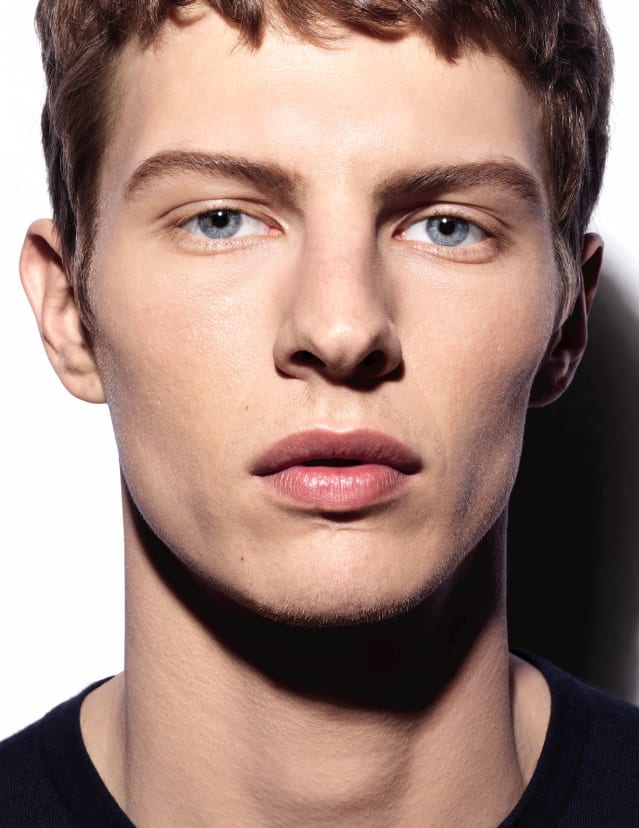South Korean men lead the world's male beauty market. Will the West ever follow suit?
Written by Jessica Rapp, CNN
Published 25th January 2019

South Korean men have long embraced beauty products deemed unmarketable to their Western counterparts. Over the past decade, they have become the world's biggest male spenders on skincare, a market that grew by 44% in the country between 2011 and 2017, according to Euromonitor.
Additionally, about three quarters of South Korean men undertake a beauty or grooming treatment (from salon hair treatments to at-home facials) at least once a week, according to a recent survey by GlobalData.

South Korean men have long embraced beauty products deemed unmarketble to their Western counterparts. Credit: Kim Taehwan
This figure is even higher for Generation Z respondents, with 58% of those born after 2000 saying they pamper themselves with "lengthy" beauty or grooming treatments at least once per week, compared to 34% of South Korean men overall.
This phenomenon can be explained in part by the influence of K-pop, according to Roald Maliangkay, director of the Korea Institute at The Australian National University.

Actor Lee Dong-wook poses for Boy de Chanel. Credit: Courtesy Chanel
"I am struck by how many local young men are now emulating the look typical of Korean male idols," he said in an email describing a recent visit to Seoul's old city center district, Myeongdong. "I saw many men in sharply cut outfits with perfectly groomed dyed hair and double eyelids (as a result of cosmetic surgery), and I even noticed a few men wearing some light makeup."
The trend may also result from pressure on men to compete in a tough job market, according to James Turnbull, a writer and lecturer based in the city of Busan, South Korea, who specializes in Korean feminism and popular culture.
"In this cut-throat environment, 20- and 30-somethings are all about improving their 'specs' with extra degrees, courses, internships, English-language qualifications and so on, and the beauty industry has been quick to address the need to get a step up on the competition through one's looks too," Turnbull said in an email, adding that Korean companies routinely ask job applicants for photographs on their resumes.
Reaction to machismo
The origins of South Korea's male beauty obsession may be more complex, however. Maliangkay's 2010 study "The effeminacy of male beauty in Korea" highlights an alternative theory: that the rejection of traditional masculinity was in fact led by women as a backlash against severe gender inequality.
One of the main catalysts, the paper argues, was the 1997 Asian financial crisis (known in South Korea as the "IMF crisis"). Unemployment across the country rose, but figures show that women were disproportionately affected.
In the year following the crash, female employment fell by 8.2 percent, almost 3 percentage points more than the equivalent figure for men. Resentment over this and other workplace inequalities, as well as the rise of literature and film questioning traditional gender roles, led women to seek out softer male figures who, as Malingkay writes, "had the potential to make the opposite sex feel more powerful."
"Today's (male) students, after all, are less likely to find much appeal in the macho type that for decades dominated in popular entertainment," he wrote in the paper. "Those tough men usually had no chance of going to university and/or of leading normal, quiet lives. Instead, they were forced to show their grit as soldiers, gangsters or policemen, often sorting out differences through violent means, while appearing fragile only in their inability to express their feelings in words."

A new breed of "kkotminam" (Korean for "flower boys") has helped reshape masculinity in a culture that still values tradition -- even when it comes to gender roles. Credit: Kim Taehwan
Maliangkay told CNN that he no longer uses the word "effeminate" when discussing the male beauty phenomenon.
"It may appear as 'effeminate' to non-Koreans, but it's probably better described differently," he explained. "To Koreans, for example, someone who fits the ideal can certainly still be considered very macho. While many Koreans will continue to find, for example, applying makeup a little odd for men, they will not associate that with any effeminacy per se."


